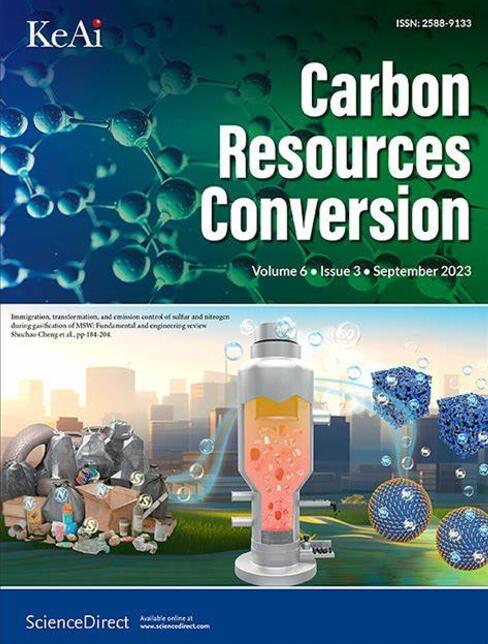Fluidized bed combustion of high water content alcohol extracted herb residue and the impacts of blending wasted activated coke
Abstract
Combustion of herb residues (HRs) for heat recovery is a good way for their utilization, but there exists such a problem as high concentration NOx emission in flue gas. The alcohol extracted herb residue (AEHR), one special type of HRs, was chosen as the object and was subjected to immediate combustion in a fluidized bed reactor to investigate the characteristics of its resulting NOx emission. The results showed that, most of the NOx in the flue gas was produced from the char nitrogen (CN); as the fuel water content increased, the NOx emission concentration exhibited a trend of first decreasing and then increasing; and a properly low combustion temperature inhibited the NOx emission upon the premise of ensuring full combustion. Air staging combustion was adopted to effectively control NOx: the NOx emission concentration in the flue gas was reduced to 296 mg·m−3 and the NOx emission reduction rate reached 46.51 % compared to conventional combustion. Co-combustion by blending wasted activated coke (WAC) into the AEHR helped both stabilize the combustion state and reduce further the NOx emission. When the blending ratio of WAC fell within a proper range of 20–30 %, the NOx emission concentration in the flue gas was as low as 231.4 mg·m−3. In addition to the dilution effect of the combustion flue gas of the blended WAC, the local reducing atmosphere caused by its incomplete combustion as well as its strong absorbability and catalytical effect was accountable for the further decrease of the NOx emission concentration.


 求助内容:
求助内容: 应助结果提醒方式:
应助结果提醒方式:


